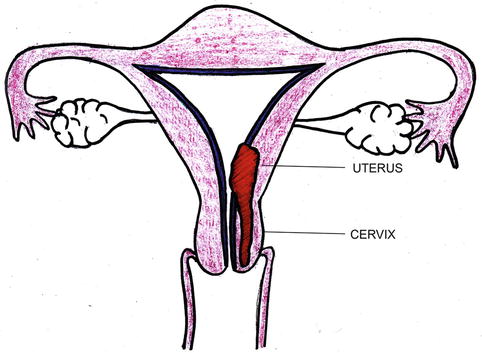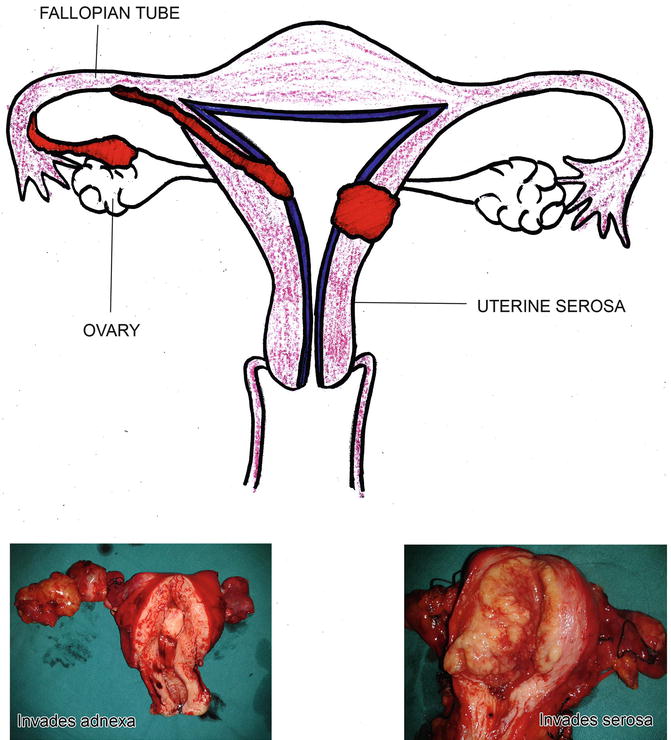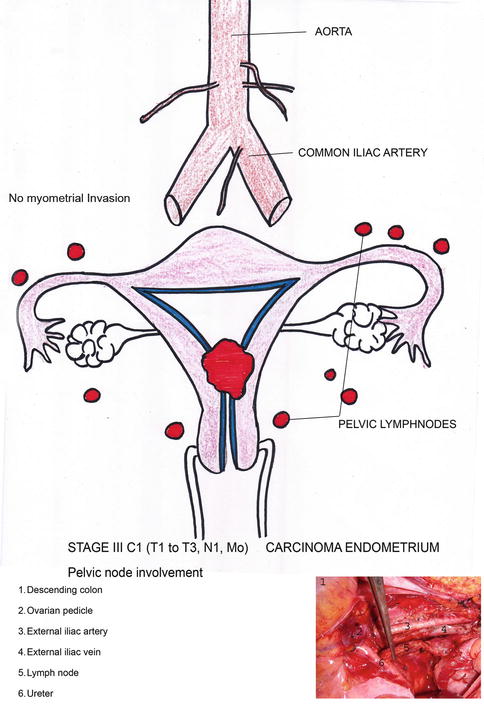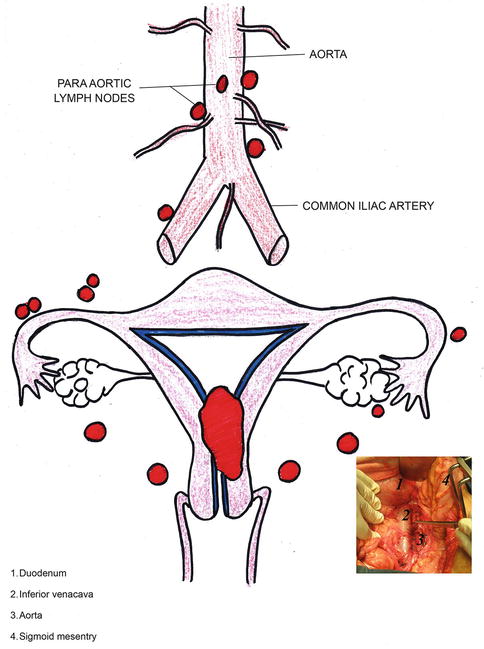Fig. 14.1
Carcinoma endometrium, Stage 1A (T1a, N0, M0) Tumor Confined to the uterus, no or < ½ myometrial invasion, Stage 1B (T1b, N0, M0) Tumor Confined to the uterus, no or > ½ myometrial invasion
Stage II (Fig. 14.2)
T2, N0, M0: The cancer has spread from the body of the uterus and infiltrates cervical stroma.


Fig. 14.2
Stage II (T2, N0, M0) Carcinoma endometrium, Cervical stromal invasion, but not beyond uterus
Stage III (Figs. 14.3, 14.4, 14.5, and 14.6)
T3, N0, M0: Either the cancer has spread outside of the uterus or into nearby tissues in the pelvic area.




Stage IIIA (T3a, N0, M0): The cancer has spread to the uterine serosa and/or to the fallopian tubes or ovaries (the adnexa).
Stage IIIB (T3b, N0, M0): The cancer has spread to the vagina and/or to the parametrium.
Stage IIIC1 (T1 to T3, N1, M0): The endometrial cancer has spread to pelvic lymph nodes but not to lymph nodes around the aorta or distant sites.
Stage IIIC2 (T1 to T3, N2, M0): The endometrial cancer has involved para-aortic lymph nodes but not spread to distant sites.

Fig. 14.3
Stage IIIA (T3a, N0, M0) Carcinoma endometrium, Tumor invades serosa or adnexa

Fig. 14.4
Stage IIIB (T3b, N0, M0) Carcinoma endometrium, Vaginal and/or parametrial involvement

Fig. 14.5
Stage III C1 (T1 to T3, N1, M0) Carcinoma endometrium, Pelvic node involvement

Fig. 14.6
Stage IIIC 2 (T1 to T3, N2, M0) Carcinoma endometrium, Para-aortic involvement
Stage IV (Fig. 14.7)
The cancer has spread to the urinary bladder or rectum, or to inguinal lymph nodes, and/or to distant organs, such as the bones, omentum, or lungs.
Stage IVA (T4, any N, M0): Mucosa of the bladder or rectum is involved by the endometrial cancer.
Stage IVB (any T, any N, M1): The cancer has spread to distant lymph nodes, the upper abdomen, and the omentum or to organs away from the uterus, such as the bones or lungs.
Stay updated, free articles. Join our Telegram channel

Full access? Get Clinical Tree


